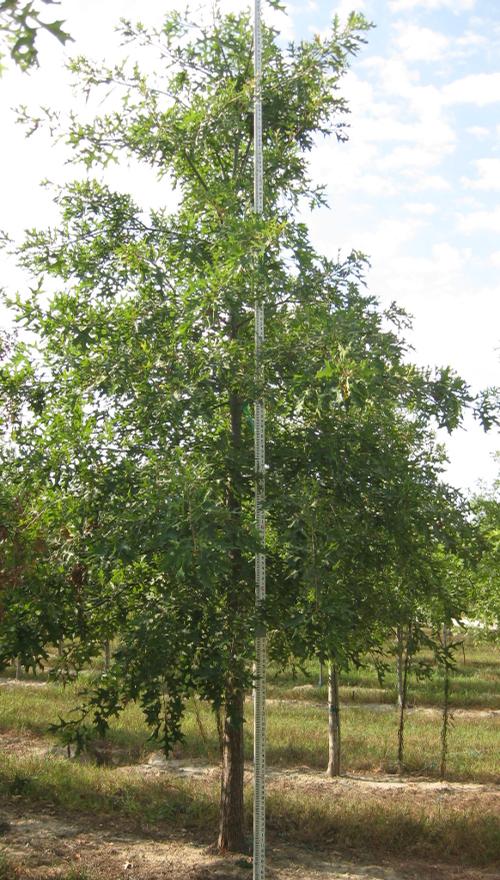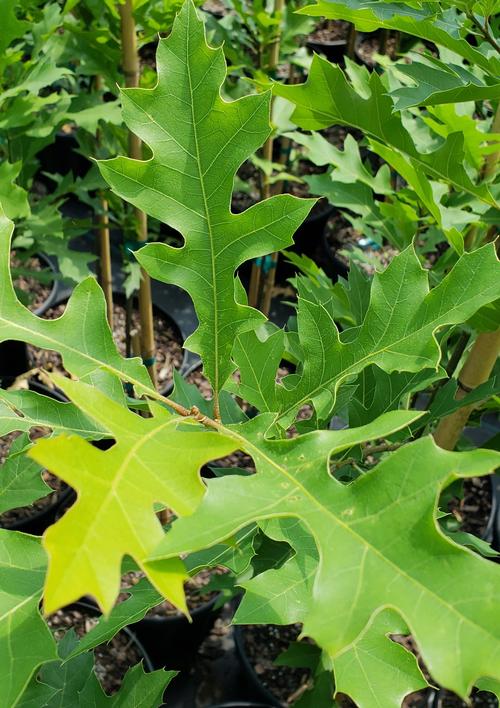



Quercus palustris
Pin Oak
Pin oak is a well-known, medium-sized, deciduous tree and is one of the fastest-growing red oaks. Generally reaching a height of 50 to 70 feet with a trunk about 3 feet in diameter.
With a more slender and graceful appearance than some oaks, the crown is pyramidal when young and becomes more rounded and oval with age. The branching pattern is unique with the lowermost branches being angled sharply downward, the middle branches horizontal, and the upper branches ascending. Young trees and lower branches of older trees hold leaves throughout winter. The fall foliage is orange or bronze to red. This oak starts producing acorns when it is 15 to 20 years old.
Pin oak is frequently used as a shade tree for home landscapes, urban streets, and parks. It is tolerant of many soil conditions, heat, and air pollution.
Acorns are eaten by woodpeckers, wild turkey, other birds, as well as small and large mammals. Male catkins produce pollen. The trees provide nest sites for birds and pollen for pollinators.
- Native shade tree
- Pyramidal habit
- Shiny, green leaves
- Category: Tree, Wetland, Native
- Hardiness Zone: 4-9
- Height: 40-70 ft
- Spread: 25-40 ft
- Foliage Color: Green
Specialty Use
| • | Wildlife Garden |
Animal Resistance
| • | Deer Resistant |
Light Requirement
| • | Full Sun |
Foliage
| • | Deciduous |
Season of Interest (Foliage)
| • | Summer |
Foliage Color
| • | Green |
Growing & Maintenance Tips for Quercus palustris
Pin oak prefers medium to wet, loamy, acidic soils and full sun. It can tolerate poorly drained soils and some flooding but adapts to drier and urban conditions. Iron chlorosis can develop in high pH soils. It is shallow-rooted and easily transplanted.
